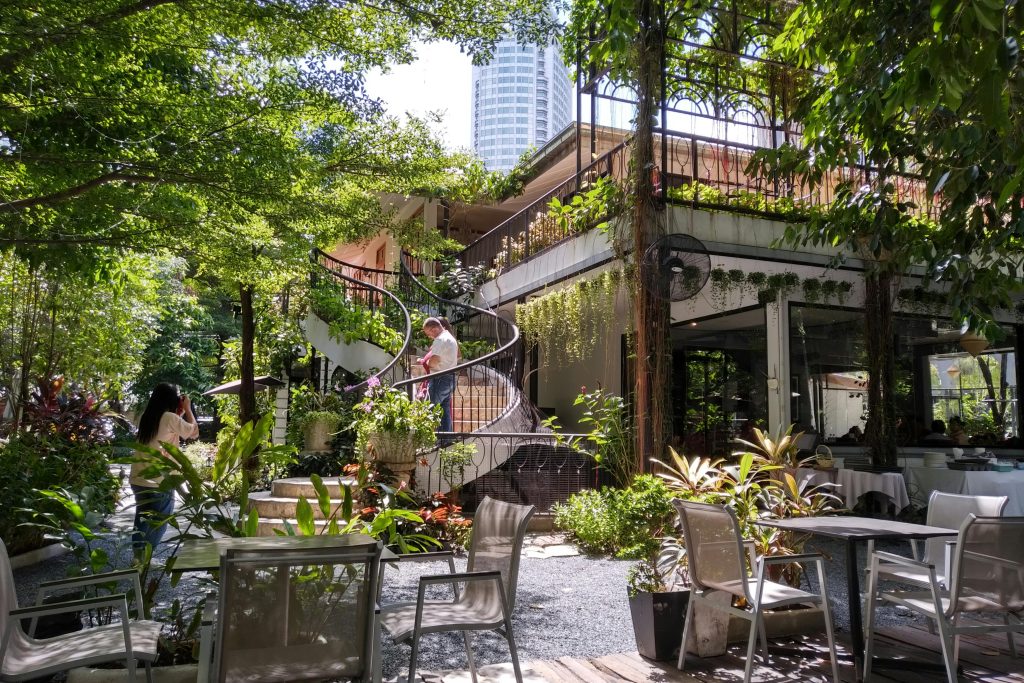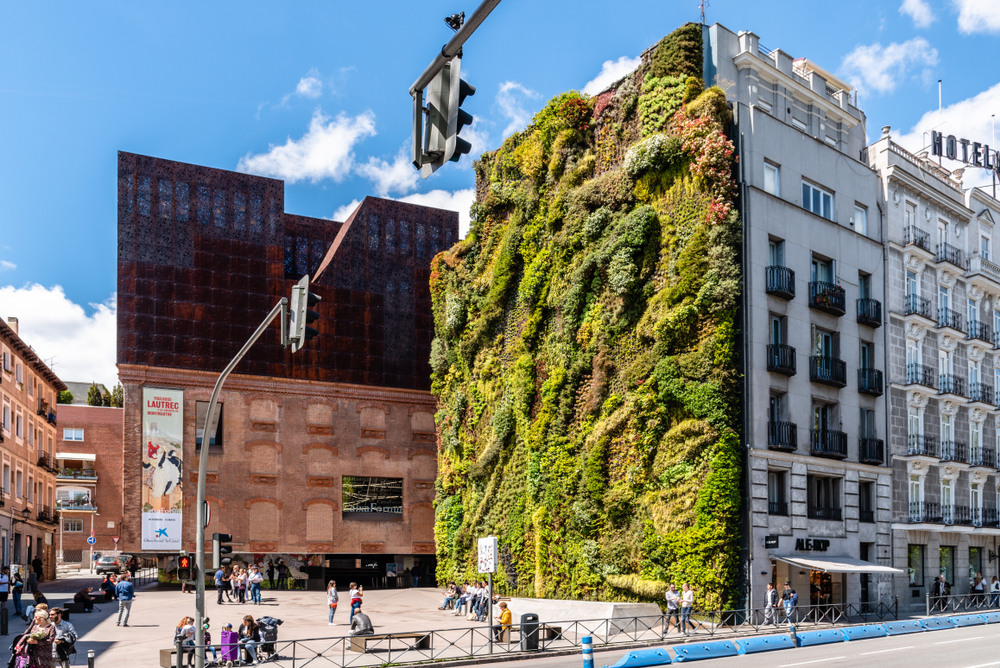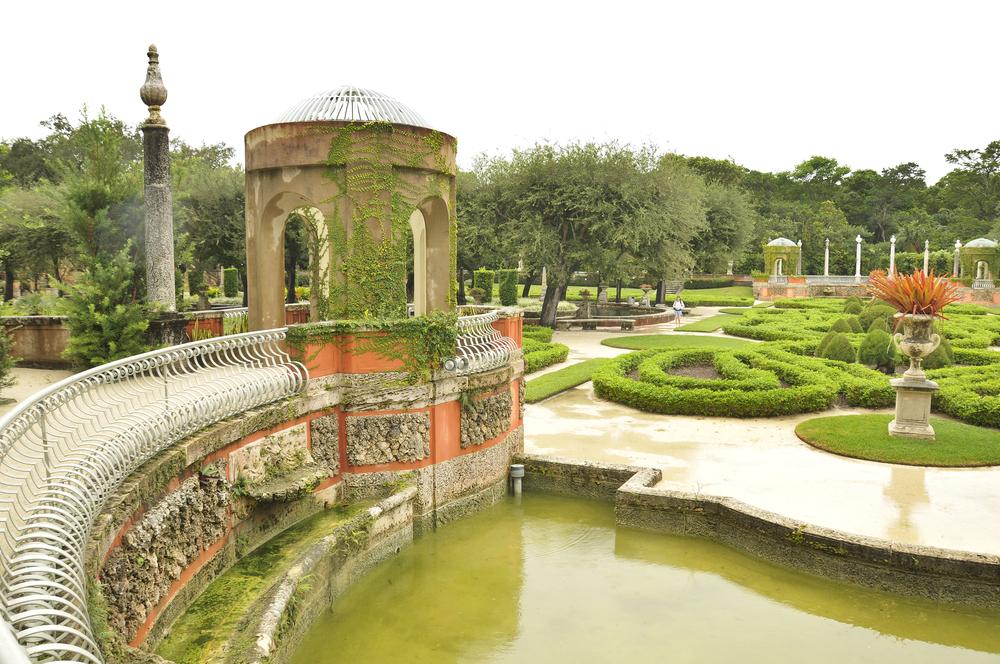Your cart is currently empty!
Watch – Mexico City is Converting Highway Pillars Into Vertical Gardens to Clean the Air and Beautify the City

Imagine driving through a megacity where every inch of space seems claimed by concrete, cars, and chaos and suddenly, you pass a towering pillar draped in cascading greenery. In Mexico City, that sight is no longer a dream or digital rendering. It’s real. And it’s growing.
In a place where air pollution claims more lives annually than organized crime, and where residents breathe some of the most toxic air in the Western Hemisphere, an unexpected symbol of hope has emerged: the pillars of a highway. Once seen only as cold, utilitarian supports for relentless traffic, these massive columns are being transformed into vertical gardens living structures meant to fight pollution, ease urban stress, and inject beauty into the greyest corners of the city.
But can vines and succulents clinging to concrete truly cleanse the air of a city that runs on combustion engines? Or is this just an Instagram-friendly illusion of progress?
The Birth of Via Verde
The Via Verde project didn’t begin in a government office it started with a question on social media.
In 2016, architect Fernando Ortiz Monasterio saw an opportunity hidden in plain sight: the 1,000 concrete columns holding up Mexico City’s Periférico highway. These towering grey structures, traversed daily by millions, seemed like lifeless symbols of a car-centric city. But Monasterio envisioned something radically different lush, vertical gardens that could soften the city’s harshest corners and offer a breath of cleaner air.
To test the idea’s traction, he posted a digital mock-up online with two simple questions: Would you support this transformation? And who should pay for it? The response was overwhelming. Nearly 98.5% of 27,000 respondents said yes. Over 80% favored private investment over government spending or public donations less a resistance to taxes, and more a reflection of deep-rooted skepticism about the government’s ability to deliver meaningful results.
Then came the viral push. With help from actor and friend Luis Gerardo Méndez, Monasterio released a one-minute video urging citizens to sign a Change.org petition. Within three days, more than 80,000 signatures and accompanying emails flooded the mayor’s inbox. “The phone started ringing,” Monasterio later recalled. The volume of public interest forced city officials to grant a meeting. Within days, the administration signed off on the project.
Importantly, this was not just a win for green infrastructure it was a win for civic engagement. The public had flipped the script: a city notorious for bureaucracy and inertia had greenlit an ambitious environmental initiative not because of top-down mandates, but because thousands of residents demanded it.
And yet, even with public backing, financing a large-scale greening project posed its own hurdles. The answer lay in compromise: every tenth pillar would carry digital advertising in exchange for funding from major brands. Despite some criticism especially of partnerships with corporations like Coca-Cola Monasterio stood firm. “We can’t solve everything at the same time,” he said. “We need their money.”
With the permits in place and investors on board, the first ten pillars were greened. They were just the beginning. Success bred expansion first 100, then 1,000. Eventually, a skeptical new administration surveyed residents again, only to find near-universal support. The project, now embraced even by its former detractors, was granted city-wide expansion.
What the Vertical Gardens Actually Do?

Each column is equipped with a modular garden system made of felt pouches crafted from recycled plastic and aluminum packaging into which various low-maintenance plants are inserted. These pouches are stitched by incarcerated volunteers in Mexico’s prisons, offering them a source of income and a connection to the outside world. Once installed, the gardens are irrigated using a closed-loop hydroponic system that collects and reuses rainwater and non-potable water from the city’s drains. This system not only reduces dependence on the city’s limited freshwater resources but also helps mitigate urban flood risks.
Sensors embedded in the infrastructure allow for remote monitoring of moisture levels, temperature, and plant health, ensuring precision care without the need for constant human oversight. This is especially critical in a city where the scale over 60,000 square meters of vertical green so far makes manual maintenance a challenge.
Functionally, the gardens promise a range of environmental benefits. Research associated with the project suggests that 50,000 square meters of vertical greenery can annually:
- Capture nearly 90 tons of carbon dioxide,
- Generate around 65 tons of oxygen,
- Filter more than 32,000 tons of harmful gases,
- Trap over six tons of dust particles,
- And process roughly 12.5 tons of heavy metals.
These figures are impressive on paper, but the project’s real impact also plays out in subtler, human ways. Studies have shown that exposure to greenery even in urban settings can reduce stress, improve mood, and foster a sense of wellbeing. This has been echoed by the citizens of Mexico City themselves, many of whom report feeling calmer and happier while commuting through the transformed corridors. As Fernando Monasterio noted, “We ask people what they like about the project, and they most like how their mood changes. They smile.”
Furthermore, the initiative has generated hundreds of jobs for gardeners, installers, and technicians, many of whom come from marginalized communities. Training is accessible and modular, broken down into short videos and simple tasks, making it possible for individuals without formal education or even botanical experience to participate and earn a living.
And yet, for all its benefits, the Via Verde team remains realistic. Not every plant survives. Of the 8 million installed, roughly 10,000 have perished a tiny fraction, but a reminder of the ongoing care such projects require. Still, the survival rate and system resilience suggest that the project is more than a green stunt; it’s a scalable, maintainable intervention in one of the world’s most polluted cities.
Is Green Always Good?

At the heart of the criticism lies a concern that Via Verde may be more cosmetic than corrective. Detractors argue that vertical gardens, while photogenic, do little to address the root causes of Mexico City’s air pollution namely, its dependence on private vehicles. “It’s just making car ownership more pleasant,” said Sergio Andrade-Ochoa of the NGO Liga Peatonal, pointing out that nearly all of the city’s mobility and pollution challenges stem from excessive car use. Beautifying a highway without curbing traffic may risk reinforcing car culture rather than challenging it.
Then there’s the matter of efficacy. While initial claims touted bold environmental benefits tens of thousands of tons of gas filtered, oxygen for thousands experts note that many of these outcomes depend on the types of plants used and the specific pollutants targeted. The species chosen for Via Verde were selected largely for low maintenance, not necessarily for high phytoremediation (pollutant-filtering) capacity. This means that, although the gardens offer localized improvement in visual appeal and potentially reduce dust and surface heat, their impact on citywide air quality is likely minimal.
Critics also challenge the project’s cost-effectiveness. A viral comparison showed that the price of building one Via Verde column could instead plant up to 300 traditional trees. In a city already facing a serious shortfall in green space less than 3m² per person, compared to the WHO’s recommended 9m² some argue that those funds might be better invested in parks, tree-lined sidewalks, or more inclusive public spaces.
Additionally, some urban advocates question whether Via Verde is genuinely a public space at all. Unlike parks or plazas, these gardens don’t invite people to linger, gather, or play. They’re designed to be seen, not used. This passive form of greening can be read as a missed opportunity to engage residents more directly in reclaiming the city’s ecological narrative.
Finally, the project’s private funding model dependent in part on corporate advertising raises ethical concerns. While partnerships with companies like Coca-Cola have made the gardens financially viable, critics point out the irony: collaborating with corporations criticized for unsustainable practices to fund a sustainability project. Even Fernando Ortiz Monasterio, the project’s founder, acknowledges the contradiction. “I know I’m cleaning Coca-Cola’s soul,” he admitted, “but we need their money.”
Lessons for Urban Innovation Worldwide

Mexico City’s Via Verde project may be rooted in local challenges, but its implications stretch far beyond the city’s borders. As cities worldwide grapple with rising pollution, shrinking green space, and overburdened infrastructure, Via Verde offers lessons both inspirational and cautionary for reimagining what sustainable urban transformation can look like. Here are key takeaways that cities across the globe can adapt, refine, or debate.
1. Reclaiming the Unused: Vertical Thinking in Dense Cities
One of Via Verde’s most compelling innovations lies in its use of underutilized space. In sprawling, built-up megacities where land is scarce and expensive, finding room for new parks is often politically and economically unfeasible. Instead of building outward, Via Verde builds upward leveraging infrastructure that already exists.
This approach echoes a broader trend in urban planning: adaptive reuse. From New York’s High Line to Seoul’s Cheonggyecheon Stream restoration, cities are learning to reprogram what they already have. Vertical gardens, green roofs, and wall-mounted agriculture offer creative, compact ways to bring nature into hyper-dense environments.
2. Greening Infrastructure Can Be More Than Environmental
While the environmental benefits of vertical gardens are debated, their emotional and psychological impact is harder to dispute. Fernando Ortiz Monasterio notes that the most frequent feedback from citizens isn’t about air quality metrics it’s about mood. The presence of greenery, even when passive, changes how people feel in a space.
Research backs this up: urban greenery has been shown to reduce stress, promote productivity, and lower urban heat island effects. Even if Via Verde’s CO₂ reduction is modest, the project still contributes to a more humane city less harsh, more livable.

3. Civic Pressure Can Push Policy Forward
The path from concept to implementation was paved not by policy, but by public will. Fernando’s viral campaign, which flooded the mayor’s office with more than 80,000 petition emails in three days, underscores a potent truth: well-organized civic activism can cut through bureaucratic inertia.
This model citizens proposing, demanding, and co-creating public projects signals a shift toward more participatory governance. It also highlights the strategic use of digital platforms to catalyze real-world outcomes, especially in cities where traditional channels may be slow or opaque.
4. Public-Private-People Partnerships Work With Caveats
Via Verde’s financial model is another noteworthy export. By allowing private companies to advertise on a small percentage of the columns, the project secured long-term funding without relying heavily on taxpayer dollars or overstretched municipal budgets.
However, such partnerships require transparency and accountability. Critics rightly ask: who benefits most when corporations fund civic infrastructure? Can a project remain public-spirited when it also serves marketing interests? The lesson isn’t to avoid corporate partnerships but to enter them with eyes wide open, clear contracts, and community oversight.
5. Simplify and Scale: Innovation Through Accessibility
One of Via Verde’s most scalable strengths is its accessibility. Training doesn’t require a university degree or engineering background just short instructional videos and a willingness to work. This allowed the project to generate dignified employment for women from low-income communities and for incarcerated individuals who sent earnings home to support their families.
By simplifying the production and maintenance process, Via Verde made itself replicable. It’s now being explored in cities across the globe through partnerships with organizations like the World Economic Forum. Projects that can be localized without being technically prohibitive are more likely to scale across borders and contexts.
How Cities Around the World Are Reimagining Highways

Mexico City’s Via Verde is far from an isolated experiment it’s part of a global shift toward transforming highways from symbols of pollution and sprawl into platforms for sustainability. Around the world, cities and nations are rethinking what roads can be, combining nature, technology, and public health goals to create what are increasingly known as “green highways.”
Sweden: Charging While You Drive
One of the most technologically advanced examples comes from Sweden, where highways are literally electrified. In the town of Visby, a pilot project installed wireless charging coils beneath the road surface, enabling electric vehicles to recharge as they move. The Swedish government now plans to expand this to a 13-mile stretch between Hallsberg and Örebro potentially becoming the first permanent electrified highway in the world. The project not only tackles “range anxiety” for EV drivers but could significantly reduce the need for extensive charging infrastructure.
South Korea: Solar Panels for Cyclists
In Sejong City, South Korea has integrated over 7,500 solar panels into the median of an eight-lane highway providing not just clean energy, but shelter for cyclists using the protected path underneath. The panels generate power for over 600 homes and power public lighting, all while encouraging non-motorized transport. It’s a brilliant convergence of infrastructure, renewable energy, and public wellness.
Netherlands: Solar Noise Barriers Power Homes
In Uden, the Netherlands, a 400-meter stretch of the A50 motorway is lined with a solar noise barrier, a sound wall fitted with bifacial solar panels. This installation generates enough green electricity to supply around 40 to 60 households. Unlike earlier experiments such as the SolaRoad, which involved embedding solar panels in the road surface and was dismantled in 2020, this project demonstrates a more practical approach. It reflects part of broader European efforts, including the Rolling Solar initiative, to harness existing infrastructure for renewable energy generation without requiring large land areas.
United States: From Testbeds to Transit Lanes
While still in its infancy compared to Europe or Asia, the U.S. has launched several pilot programs. At Purdue University in Indiana, researchers are testing roads embedded with electromagnetic coils to charge electric vehicles in motion. Elsewhere, urban areas are exploring green corridors that include bike and pedestrian lanes, permeable pavement, and landscaping to manage stormwater and reduce urban heat.
Kenya: Roads That Capture Water and Feed Communities
In Makueni County, Kenya, the Green Roads for Water program turns roads into tools for climate resilience and food security. Engineers have integrated culverts, drains, and small ponds to capture stormwater and redirect it for irrigation, while fruit trees planted along the roadsides provide both ecological and economic benefits. This low-tech but high-impact approach reduces erosion, supports farming, and helps communities adapt to climate extremes by blending road design with water harvesting and agroforestry.
Reimagining Cities, One Pillar at a Time
Via Verde isn’t a perfect solution but it doesn’t have to be. Its true success lies not just in how much CO₂ it absorbs or how many kilograms of dust it traps, but in how it reorients the way we think about cities, infrastructure, and what’s possible when public imagination meets urban resilience.
In a world often paralyzed by the scale of environmental challenges, projects like this offer something powerful: momentum. Mexico City didn’t wait for a blank slate. It started with pillars dead space transformed into living lungs. With recycled materials, reclaimed water, citizen advocacy, and private-sector support, the project turned a traffic-choked expressway into a symbol of civic renewal.
What makes Via Verde resonate globally is the message it plants sometimes literally in concrete: progress doesn’t always require demolition or grand reinvention. Often, it means seeing potential where others see permanence, and acting even when the solutions feel incomplete.
For other cities watching and wondering, the call is clear: don’t just build greener. Rethink what’s already built. From solar highways in the Netherlands to water-absorbing roadways in Kenya, and vertical gardens in Mexico City, the infrastructure of yesterday can and must serve the needs of tomorrow.
Whether it’s for the air we breathe, the mental space we occupy, or the planet we all share, the question isn’t if we should green our cities. It’s how creatively, equitably, and urgently we choose to do it.
